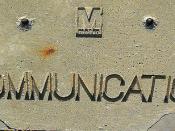To ensure successful communications within your organization, it is best to start with the very basics: your knowledge of verbal and non-verbal communications. In the workplace, these types of communications are continually exchanged, oftentimes without much planning or even the thought that such communications are taking place.
The Importance of Non-Verbal Communication
For instance, it's not always just what you say. It's also how you "say" it - taking into account your eyes, your posture, your overall body language, even your appearance at the time the communication is exchanged, and the voice in which you offer the exchange.
In verbal communication, an active dialogue is engaged with the use of words. At the same time, however, non-verbal communication takes place, relying on nonverbal cues, such as gestures, eye contact, facial expressions, even clothing and personal space.
Nonverbal cues are very powerful, making it crucial that you pay attention to your actions, as well as the nonverbal cues of those around you.
If, during your meeting, participants begin to doodle or chat amongst themselves, they are no longer paying attention to you: Your message has become boring or your delivery is no longer engaging.
Once again, you need to be mindful of cultural differences when using or interpreting nonverbal cues. For instance, the handshake that is so widely accepted in Western cultures as a greeting or confirmation of a business deal is not accepted in other cultures, and can cause confusion.
While eye contact, facial expressions, posture, gestures, clothing and space are obvious nonverbal communication cues, others strongly influence interpretation of messages, including how the message is delivered. This means paying close attention to your tone of voice, even your voice's overall loudness and its pitch.
Be mindful of your own nonverbal cues, as well as the nonverbal cues...


